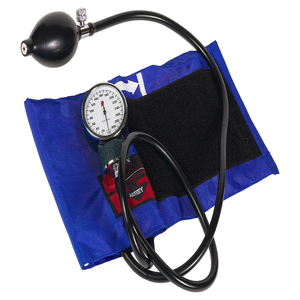Acupuncture for Hypertension

In China and Japan I have seen acupuncture used to treat just about everything, with varying degrees of success.
Researchers from Erlangen in Germany have published a randomized single blind trial comparing acupuncture with sham needling in the journal Circulation. The results suggest that acupuncture may decrease blood pressure in hypertensive patients by a similar amount to that achieved using medication.
The investigators randomized 160 outpatients (mean age 58) with uncomplicated, mild to moderate hypertension to six weeks of acupuncture performed by Chinese medicine practitioners (trained in China), or to a sham procedure. Those on hypertensive medication continued taking it.
Patients were assigned to one of four patterns of hypertension, based on TCM diagnosis. Those in both trial arms underwent 22, 30-minute treatment sessions over a six-week period. During each session, three acupuncture points were needled bilaterally for 20 minutes. In the active treatment group, the points were chosen according to traditional Chinese medical diagnosis. Sham treatment consisted of needling points that according to Chinese medical theory would have no effect on blood pressure
Twenty-four hour ambulatory systolic and diastolic blood pressures were significantly reduced from baseline in the acupuncture-treated patients (by 5.4 mmHg and 3.0 mmHg, respectively). No significant decrease was seen in the sham-treated patients. The extent of blood pressure reduction observed was comparable to that seen with ACE-inhibitor monotherapy or aggressive lifestyle changes. However, blood pressure returned to pretreatment levels within 12 weeks of treatment cessation, leading investigators to conclude that ongoing acupuncture treatments would be required to maintain the beneficial effects.
This in an interesting study, but I agree entirely with some of the comments made in an accompanying editorial by Fiona Turnbull and Anushka Patel from the George Institute for International Health in Sydney, Australia.
Randomized trials of acupuncture have been conducted since the 1970s, but many were of poor quality, and did not even include control groups. In 1995 the World Health Organization published clear guidelines for clinical research on acupuncture, which included detailed information relating to the nature of control groups and blinding in randomized controlled trials. More recently, a National Institutes of Health Consensus Development Panel stated that the acceptance of acupuncture as a reliable therapeutic choice would depend on its evaluation using study designs that could withstand careful scientific scrutiny.
The whole issue of “sham” acupuncture remains problematic. Not only are we doing something physical. But the people administering the acupuncture know whether or not they are needling an “active” point, an even if they say nothing, they may well communicate what they are doing. There is also a more subtle point that is not raised in the editorial. A good acupuncturist does not just stick in a needle. He or she waits for the appearance of a characteristic and subjective needle sensation that tells him or her whether the needle is in the correct position.
Acupuncture studies are, simply for logistical reasons, usually fairly small and this one was no exception. And that brings us to the other point. Most forms of alternative and complementary treatment are very time consuming, and need a lot from a patient who has to show up for multiple treatments, for which he may be paying himself.
If a course of acupuncture treatment can bring about some long-term change or re-balancing in a person that might be worthwhile, but in this study the blood pressure went back up once the treatment was discontinued.






